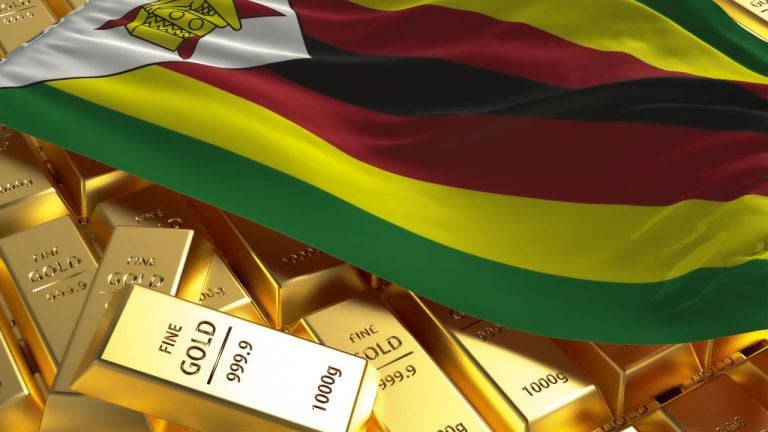Report: Zimbabwe’s Central Bank Says Upcoming Gold-Backed Digital Currency to Help Reduce Demand for US Dollar

The governor of the Zimbabwean central bank, John Mangudya, recently revealed that his institution is planning to introduce a gold-backed digital currency. According to the governor, the soon-to-be-introduced gold-backed digital currency is expected to help diminish local residents’ demand for the U.S. dollar.
Taming High Demand for the US Dollar
The Zimbabwean central bank has said it will introduce a gold-backed digital currency that will be used both as an alternative medium of exchange and a store of value. According to a report in the Sunday Mail, this gold-backed version of the Zimbabwean currency will complement the physical gold coins that were introduced in 2022 by the Reserve Bank of Zimbabwe (RBZ).
As reported by Bitcoin.com News in early July of 2022, the gold coins were part of RBZ’s multi-pronged strategy that sought to halt the depreciation of the local currency. A few months after their introduction, the Zimbabwean central bank governor John Mangudya said the gold coins had proven to be an “effective open market instrument for mopping up excess liquidity in the economy.”
In addition to being an effective tool for the RBZ, the physical gold coins were intended to help diminish local residents’ demand for the greenback which they see as an alternative store of value. However, despite the RBZ’a injection of over 25,000 gold coins into the financial system so far, local demand for the U.S. dollar has not dissipated. This, according to Mangudya, has prompted the RBZ to look for another way of tackling the problem.
“We shall also soon be introducing digital gold tokens to ensure that those with low amounts of local currency are able to purchase the gold units so that we leave no one and no place behind,” the governor reportedly said.
The RBZ governor nevertheless did not provide details of when the gold-backed digital currency will start circulating.
Meanwhile, the Sunday Mail report also quotes Mangudya offering his reasons why the local currency depreciated on the parallel market. He said the “expectations of increased foreign currency supply” versus lower supply seen in the first three weeks of April may partly explain why the currency has depreciated from ZWL1,200 per dollar seen in March to the current rate of around ZWL1,800 per dollar.
Register your email here to get a weekly update on African news sent to your inbox:
What are your thoughts on this story? Let us know what you think in the comments section below.






